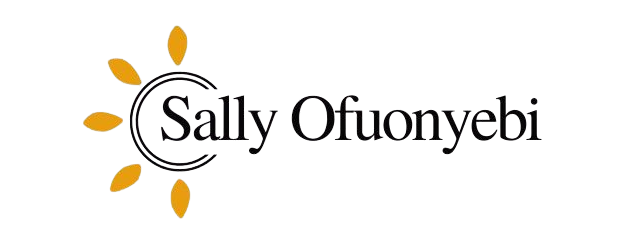How to Come Up With Content Ideas: 15 Best Ways

Looking for practical tips on how to come up with content ideas? Here are the best ways to find content ideas your audience will love.
Coming up with content ideas can feel easy in theory, but when you’re staring at a blank page or trying to plan next month’s calendar, it suddenly becomes a heavy lift.
You want to stay consistent. You need to stay relevant. But the biggest blocker? Knowing what the heck to talk about.
The good news is that content ideas are everywhere. You just need to know where to look.
In this post, I’m breaking down 15 smart to find content ideas that your audience will actually care about so that you never run out of content to post. Ever again.
Whether you’re writing blog posts, filming reels, or looking for ideas for your content strategy, this guide will give you a whole system to keep ideas flowing like clockwork.
Let’s get you out of the content idea drought, shall we?
1. In Your Head (Not Your Regular Style)
Your brain is a content ideas generator. It only takes a few intentional minutes of focused thinking to uncover insights, opinions, and stories worth sharing.
Here’s how to tap into it:
- Start with content pillars: Write down the 3–5 categories your content is built around. These are usually aligned with your services, offers, or expertise.
- Do a brain dump: Under each pillar, jot down every topic that comes to mind—questions clients ask you, common mistakes, lessons you’ve learned, or even misconceptions in your niche.
- Break things down: Choose a topic and list subtopics, angles, or questions you could explore within it. A single idea can often turn into three or four posts when you zoom in.
Also, never underestimate the eureka moment—that random idea that pops into your mind while in the shower or on a walk. Keep a running note in your phone or notebook for capturing spontaneous ideas. They often turn into your most authentic content.
2. Exploding Topics
If you want to stay ahead of the curve, Exploding Topics is one of the best tools out there. It shows you what’s trending before it goes mainstream, using real-time data across industries.
To use it strategically:
- Visit ExplodingTopics.com
- Filter by your niche or content category
- Identify trending phrases, tools, or emerging concepts
- Use these trends as seed ideas for posts, how-to guides, or expert commentary
Just make sure to tie the trend back to your audience’s needs so it feels relevant, not random.
3. Using AI Tools
AI isn’t here to replace you. It’s here to support your creative process.
Tools like ChatGPT and Claude AI can help you brainstorm content topics, outline posts, generate headlines, or even suggest FAQs based on your niche.
You can feed it prompts like:
- “Give me blog topic ideas for a brand strategist.”
- “What are common questions people ask about website copywriting?”
- “Create an outline for a post on building a sales funne.l”
You don’t need to use every idea word-for-word. Think of AI as a collaborative whiteboard—one that never runs out of suggestions.
The way to get the best outputs and ideas from AI tools is to input detailed prompts.
Swipe the AI Prompt Cheat Sheet
Save 20+ hours every single week on your content workflow with first-grade prompts that are perfect for keyword research, writing, strategy, and social media.
4. Facebook Groups
Private Facebook groups are filled with unfiltered insights.
People share questions, vent frustrations, and seek advice—all of which are raw, honest clues to what your audience cares about.
Here’s how to use them:
- Join 3–5 groups that your ideal client might hang out in
- Search for keywords related to your expertise (e.g., “SEO,” “branding,” “email marketing”)
- Look for posts with strong engagement or recurring questions
- Screenshot or copy posts that could spark content ideas
You’re not there to copy or promote but to listen and extract patterns. When you start answering those same questions in your content, your relevance goes up immediately.
5. Google Search
Google is a search engine.
And if you calm down to check out what it offers aside from the regular result pages everyone else knows about, you’ll find content ideas for your business.
Google Search features literally tells you what people are searching for.
- Start typing a keyword or question in the search bar, and note what autocomplete suggests.
- Scroll down to the “People Also Ask” section around mid-page. These are real queries based on user intent.
- At the bottom, explore the “Related Searches” section for more angles.
Each one of these can become its own blog post, social caption, or newsletter topic. It’s a quick way to ensure your content aligns with actual demand, not just assumptions.
6. Instagram Lives
Here is another brilliant way to find content ideas—Instagram Lives.
Instagram Lives offer behind-the-scenes access to what your peers, mentors, or industry leaders are currently thinking about.
Because they’re unscripted, you often catch the real stuff—not just the polished, curated content.
Here’s what to do:
- Hot lives or watch those from people in your niche or those serving your audience
- Pay attention to repeated questions from viewers
- Ask questions to find ideas on what they want
You can also even recap a live event you attended as a value-driven post, especially if it adds your unique insight.
7. TikTok
Of the many social platforms I’ve tested, one thing I find amusing about TikTok is its search engine functionality.
You can see related keyword suggestions right inside the app, making it a useful tool to find content ideas.
Moreover, TikToks rank on Google SERP. It’s frickin’ awesome.
To mine content ideas:
- Search TikToks related to your niche
- Sort by high engagement (saves and shares)
- Scan the comment section for repeated questions or points of confusion
Then, use what you find as inspiration for your own content on the platform or on your blog.
8. Quora
Quora is an open forum where people ask questions on virtually every topic. You can use it to:
- Search for your niche or service keywords
- Filter by “most viewed” or “frequent”
- Read the responses to understand different perspectives
Quora questions often make great blog post titles or newsletter subject lines—especially if you go deeper than the answers already there.
9. Reddit
Reddit is like Quora but more organized, more chaotic (yes, the exact opposite of organized), and honestly… more real.
If there is one good thing I love about the site, apart from its high level of anonymity, it’s the fact that there is room for everyone. Whatever your profession or niche is, you’d find a subreddit where your target audience and fellow professionals are.
Find subreddits (they are like groups) where your target audience hangs out.
Some examples: r/blogging, r/smallbusiness, r/femalefashionadvice, r/adhd, r/productivity. There’s a ton of subreddits.
Steps to follow:
- Search your target subreddits and join the community
- Sort by “Top” posts or “Rising”
- Read both the questions and the responses—they often reflect real-life struggles and insights
You can answer one of these questions in a full blog post and then share it back as a value-packed comment.
10. Google Trends
Google Trends is still effective for finding content ideas.
Just like the name, it shows you trends for different topics so you can create better content.
This tool shows what’s gaining momentum in real time—by region, category, or even comparison. You can:
- Track seasonal spikes (e.g., “holiday marketing tips”)
- See which version of a keyword is more popular (“online course” vs. “digital course”)
- Use it to validate topic relevance before you invest time creating content
It’s best used in combination with SEO tools or Google Search Insights to round out your strategy.
11. Slack Channel
If you’re in any business or creator communities that run on Slack, don’t ignore the conversations happening there. They can reveal what’s unclear, what’s trending, and what people are actively trying to figure out.
Create a habit of:
- Skimming through the channels #[name of the channel] within the main Slack channels you’re in. E.g., #strategy #rants
- Noting the problems people ask for help solving
- Saving discussions that spark content ideas.
12. Pinterest Trends
If you use Pinterest, this is an easy way to find content ideas for what to pin or blog about.
Pinterest Trends helps you spot what’s being pinned or searched at high volume.
Go to trends.pinterest.com and search your niche topics. It will show you:
- Keyword popularity over time
- Related search phrases
- Peak interest windows (great for seasonal content)
This works especially well if your content includes visuals (like infographics, checklists, or carousel posts) or if your audience overlaps with lifestyle or creative niches.
13. Audience Research
Nothing beats asking your audience directly. Even a short poll can reveal content opportunities you wouldn’t have thought of on your own.
To find content ideas through audience research, you can include:
- Instagram story polls or question boxes
- Email surveys via Google Forms or Typeform
- A direct “What do you want to learn more about?” question in your newsletter
Keep it short and focused. People love to share when they feel like you’ll actually use their feedback.
14. Competitor Research (Content Gap Analysis)
Look at the content your competitors are creating—and more importantly, what they’re not creating.
Use SEO tools like:
- KeySearch
- Ubersuggest
- SEMrush
- SpyFu
Ask yourself:
- What questions are they skipping?
- What could be explained better or from a different angle?
- Are there audience comments asking for more depth?
That’s your entry point.
15. From Your Content Bank
Creating a content bank for your business will save you a lot of time (and some headaches, too).
You’ll have a collection of ideas you can choose from without running out of content. Ever!
For someone like me who needs to juggle client projects, blog posts, social content, and a lot of BTS stuff, it’d be hard to squeeze out the time to worry about content ideas.
That’s why I created a content bank. You should, too.
To build a content bank:
- Collect all your existing content into one folder or Notion board
- Tag ideas by category, stage of awareness, or format
- Revisit this bank when planning content, so you’re never starting from scratch
Looking for a simple system to organize your content ideas as they come? Grab this Content Calendar Template.
Use These Methods to Find Content Ideas
How to come up with content ideas your audience will love isn’t about chasing trends or guessing. It’s about listening, observing, and building systems that keep ideas flowing consistently.
When you know where to look, you’ll always have a list of meaningful topics to draw from.
Start with two or three of the strategies above and make them part of your monthly content planning process. Over time, you’ll develop a bank of ideas so rich and relevant that you’ll never feel stuck again.
Looking for help with building a content strategy and finding relevant ideas for your blog? Book an Intensive session.









